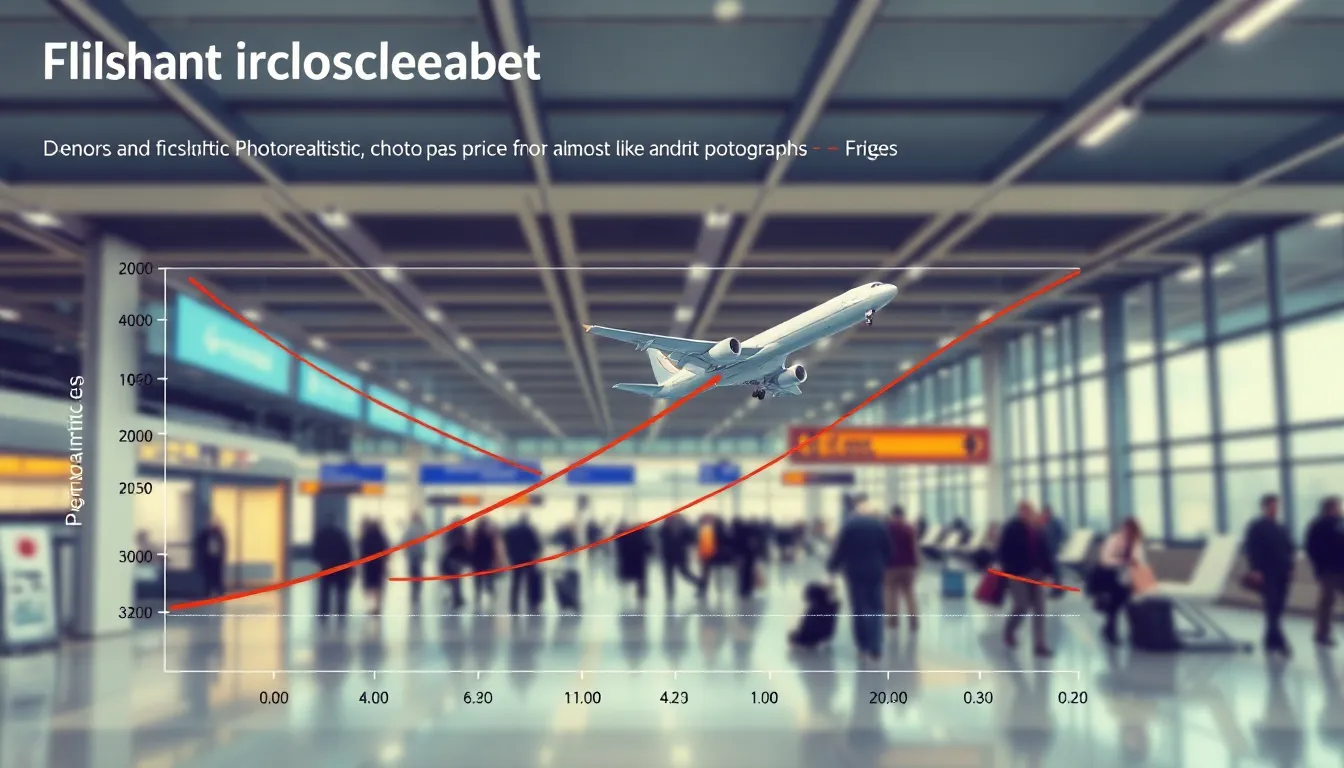Table of Contents
ToggleIn today’s fast-paced world, understanding flight ticket prices can make or break travel plans. With fluctuating costs influenced by seasons, demand, and airline competition, travelers often find themselves navigating a complex landscape. Whether planning a spontaneous getaway or a meticulously organized trip, knowing how to secure the best deals is essential.
As technology evolves, so do the strategies for finding affordable flights. From utilizing fare comparison websites to understanding the nuances of airline pricing algorithms, savvy travelers can unlock significant savings. This article dives into the factors that impact flight ticket prices and offers practical tips to help travelers make informed decisions, ensuring they get the most value for their money.
Overview of Flight Ticket Prices
Flight ticket prices reflect various influencing factors. Seasonal demand plays a key role; prices often increase during peak travel times, such as holidays and summer months. Airlines adjust prices based on demand, and this fluctuation can vary significantly by destination.
Competition among airlines also affects pricing. When multiple carriers operate on the same route, prices tend to be lower. Fare wars can emerge, leading to further reductions, benefiting travelers. It’s common for airlines to offer promotional deals, particularly for off-peak flights.
Technology enhances the ability to find competitive prices. Fare comparison websites aggregate options, allowing travelers to evaluate available flights quickly. Inputting flexible travel dates often reveals lower fares that might otherwise go unnoticed.
Airline pricing algorithms add complexity. These algorithms analyze past travel patterns, consumer behavior, and real-time data to set prices dynamically. Awareness of these algorithms can help travelers time their purchases effectively.
Travelers can also consider additional costs associated with flight bookings. Budget airlines might offer lower base fares while charging for extras like baggage. Evaluating the total cost, including fees, ensures travelers choose flights that fit their budgets.
By leveraging these insights into flight ticket pricing, travelers can navigate the complexities and maximize their savings.
Factors Influencing Flight Ticket Prices

Multiple elements impact flight ticket prices, primarily demand and supply dynamics, and seasonality effects. Understanding these factors aids travelers in identifying cost-effective options.
Demand and Supply Dynamics
Demand and supply dynamics significantly influence ticket prices. Higher demand typically leads to elevated fares, especially for popular routes during busy periods. Conversely, increased supply from airlines can bring prices down. When multiple carriers compete on the same route, price reductions may occur as airlines engage in fare wars or promotional campaigns. Price adjustments may take place closer to departure dates as airlines minimize empty seats, making it crucial for travelers to book strategically to leverage these fluctuations.
Seasonality Effects
Seasonality effects profoundly affect ticket pricing. Prices often surge during peak travel seasons, such as holidays, summer vacations, and significant events. Anticipated spikes in demand during these times prompt airlines to increase prices. Off-peak seasons generally offer lower fares as traveler numbers decline. Monitoring seasonal trends allows travelers to pinpoint optimal booking times, thereby capitalizing on lower ticket prices. Recognizing these seasonal variations can lead to substantial savings and more flexibility in travel plans.
Comparing Domestic and International Flight Ticket Prices
Understanding the differences between domestic and international flight ticket prices helps travelers budget effectively. Price variations stem from several factors, including airline policies, route popularity, and competition.
Cost Variations by Airline
Airlines exhibit distinct pricing strategies, leading to significant cost differences for similar routes. Major carriers often charge higher fares, leveraging their brand recognition and extensive routes. Low-cost airlines, on the other hand, provide competitive pricing, frequently offering promotional deals and budget-friendly options. For instance:
- Major Carriers: Offer full services, amenities, and flexible changes, priced at a premium.
- Budget Airlines: Use a no-frills approach, charging lower base fares while levying additional fees for luggage and other services.
In addition, alliances among airlines can create more competitive pricing structures due to increased route options, which may lower fares for travelers.
Price Trends in Different Regions
Price variations occur at a regional level influenced by local demand patterns and competition. Regions with major tourist attractions generally witness higher ticket prices, particularly during peak seasons. In contrast, less frequented routes may offer reduced fares to stimulate travel. For example:
- North America: Domestic flights tend to be more competitive due to multiple airlines servicing popular routes, driving average ticket prices down.
- Europe: International fares may fluctuate based on distance, with shorter flights typically costing less than longer-haul options, even within the same area.
Monitoring these regional trends provides valuable insights into price expectations and optimal booking times.
Tips for Finding the Best Flight Ticket Prices
Securing the best flight ticket prices requires strategic planning and the right tools. Implementing effective booking strategies and utilizing online resources can lead to significant savings.
Booking Strategies
- Book Early: Booking flights 1-3 months prior to departure often yields better prices. This timeframe helps avoid last-minute fare increases.
- Be Flexible: Being open to travel dates and times allows travelers to take advantage of lower fares. Using flexible date search options can reveal cheaper alternatives.
- Consider Alternative Airports: Flying into or out of nearby airports may present lower ticket prices. Researching smaller airports could lead to more affordable options.
- Set Fare Alerts: Utilizing fare alert features from airlines and travel websites notifies travelers of price drops or deals, ensuring they can purchase tickets at optimal times.
- Use Incognito Browsing: Searching for flights in incognito mode can prevent websites from tracking user activity and potentially increasing prices based on demand.
Tools and Websites to Use
- Fare Comparison Websites: Sites such as Kayak, Skyscanner, and Google Flights allow travelers to compare multiple airlines’ prices. These platforms provide visual insights into fare fluctuations.
- Airline Websites: Checking official airline sites can reveal exclusive deals not available on third-party platforms. Browsing these websites often uncovers specific promotions.
- Travel Apps: Mobile apps from airlines and travel aggregators streamline the booking process and can offer app-only discounts, enhancing convenience and savings.
- Social Media: Following airlines on social media platforms helps travelers stay informed about flash sales and promotional offers. Companies often announce limited-time deals on these channels.
- Loyalty Programs: Signing up for airline loyalty programs enables travelers to earn miles, which can lead to discounts or free flights in the future. Regular travelers benefit significantly from program memberships.
Navigating the world of flight ticket prices can be challenging but understanding the influencing factors can lead to significant savings. By keeping an eye on seasonal trends and airline competition travelers can make informed decisions. Utilizing technology and fare comparison tools adds another layer of strategy to the booking process.
Flexibility with travel dates and routes often unlocks better deals. With the right approach and a bit of research travelers can secure affordable flights that fit their budgets. Staying informed and proactive in booking will ultimately enhance their travel experience.




